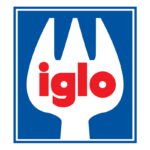Q: Despite the industry’s focus on food safety, why do recalls remain a major issue, and where are the biggest gaps in risk mitigation?
Although manufacturers have focused heavily on food safety over the past several years, recalls persist due to gaps at critical control points (CCPs) and control points (CPs) and weaknesses in risk management. Some hazards go undetected because inspection methods may not cover all potential contamination points along the process and production line. Additionally, as food manufacturers handle a wider range of products and packaging formats, traditional metal detection systems can struggle to keep up. Advanced x-ray inspection provides detailed imaging that enhances contaminant detection, addressing these gaps and reducing recall risks.
Q: What are some of the most common or problematic contaminants that can enter the production stream for red meat, poultry, seafood, and fruits and vegetables?
In red meat and poultry, bone fragments pose inherent risks to food safety, including very small pieces that are not visible to the naked eye. Seafood products can have issues with bones and shells. In addition to biologically-based hazards, foreign materials can be accidentally introduced at some point, such as hooks in seafood or wires embedded in red meat or poultry. In the produce industry, unwanted foreign objects can make their way through harvesting and handling processes, such as stones from the fields or metal fragments from the top of a can or jar. This is why x-ray inspection systems are crucial in finding and removing foreign body contaminants.
Q: HACCP plans help manufacturers identify control points (CPs) and prevent recalls. What key risks might still be overlooked?
HACCP plans are essential for food safety, but vulnerabilities exist. Some control points may be missed, particularly in upstream raw material inspection or during final packaging steps. Older inspection systems may struggle to detect low-density, small, calcified bones, or thin glass fragments, especially in complex, high-contrast images. Advanced dual-energy x-ray systems, like Eagle’s PXT™ technology, enhance detection and help close these gaps. Placing x-ray systems at multiple points along the production line further strengthens HACCP plans and reduces recall risks.
Q: What are some similarities and differences between x-ray and metal detection, and what are the key benefits of x-ray as a broader tool?
There are some similarities between x-ray and metal detection. For example, both systems can be found in manufacturing plants and each can detect metals, including ferrous, non-ferrous and both magnetic and non-magnetic stainless-steel pieces. X-ray inspection goes beyond the identification of metal, however, offering a greater ability to find and remove other foreign bodies and simultaneously assure quality through inline checks for mass measurement, fill level variation and the identification of missing or broken components. Additionally, x-ray has higher sensitivities, and these machines are not affected by moisture, salt content or temperature, compared to metal detectors. X-ray systems are versatile and used to inspect foods across a variety of forms, from raw, bulk flow and pumped products to those in a range of package types, such as glass jars, bottles and metal cans. The choice of an inspection system depends on applications and other factors, including budget.
X-ray Inspection Industry Report Insights.Advancements. Solutions.
For comprehensive insights into x-ray inspection, check out our monthly X-ray Inspection Industry Report. Each edition features an in-depth interview with our x-ray inspection experts, addressing frequently asked questions related to technology capabilities, regulatory compliance, and overall food safety. Download the full report below to discover valuable answers and enhance your understanding of the latest trends and best practices in x-ray inspection.
Expert Insights Stay ahead of the Curve with Industry Trends

Get Our Monthly X-ray Inspection Report Sign Up Today
Receive our monthly report on inspection trends and advancements.
"*" indicates required fields

.svg)










